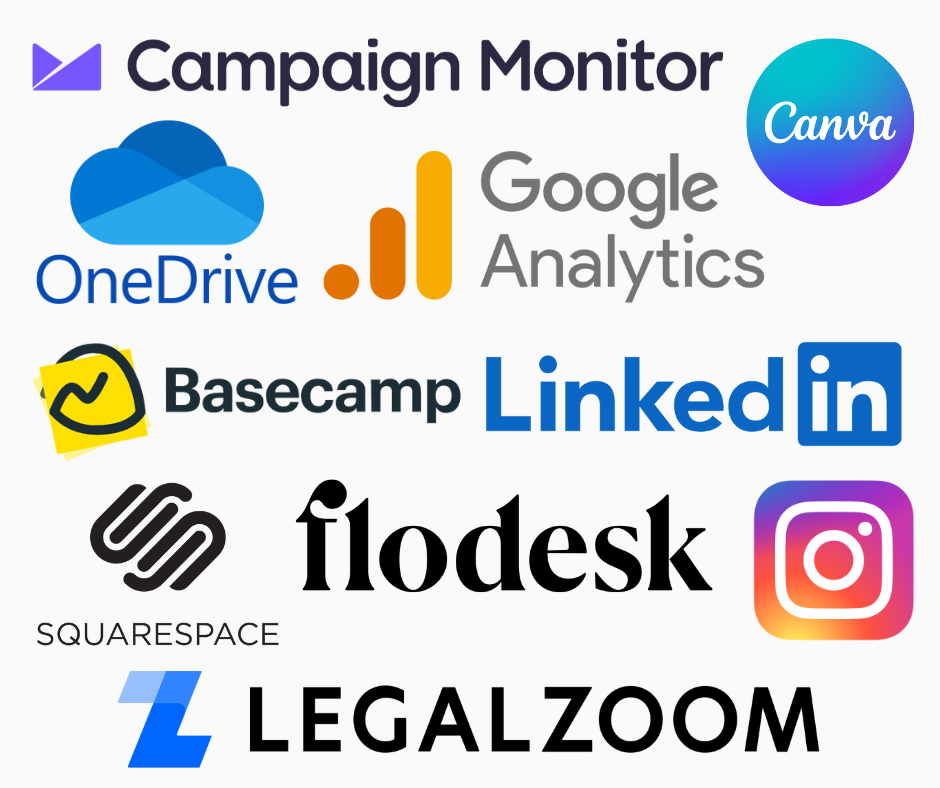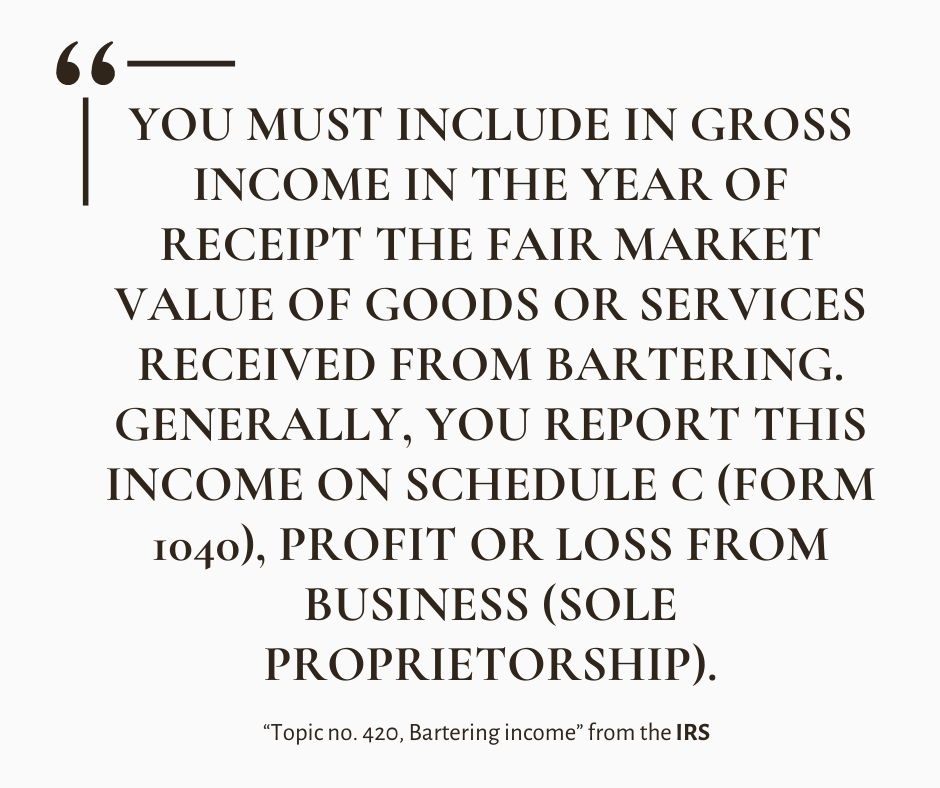
No Cash? Here’s How to Start a Creative Business on a Tight Budget
Summary
Starting a creative business on a tight budget is possible with careful planning and resourcefulness. Essential steps include defining your vision, conducting market research, creating a business plan, and building a brand identity. Utilize free online tools, network for experience and exposure, and consider alternative funding options like pre-sales, crowdfunding, and grants. Staying lean and leveraging contractors instead of full-time employees can help manage costs effectively.
Reflection Questions
- What unique value proposition does your business offer, and how can you leverage this to stand out in your market?
- How can you effectively use free or low-cost tools and resources to establish and promote your business?
- In what ways can networking and collaboration enhance your business’s growth and visibility without requiring significant financial investment?
Journal Prompt
Reflect on your journey to start a creative business with limited funds. Describe your vision and mission in detail. What drives your passion for this venture, and how do you plan to address market needs uniquely? Identify the specific steps you will take to minimize costs while maximizing impact. Consider the challenges you might face and outline strategies to overcome them. How can you leverage alternative funding options and resourceful tactics to build a strong foundation for your business? Write about your long-term goals and the legacy you hope to create through your business.
Curious how to start a business with no money? Whether you’re dreaming of opening an interior design firm, ceramics studio, boutique, or art gallery, you can get your venture off the ground without breaking the bank. In this DesignDash Guide, we’ll walk you through essential steps and clever tactics to help you navigate the startup phase—from securing initial funding to managing operational costs efficiently. Wait—what do you even need the money for? Don’t worry, we’ll cover that, too. Read on to learn how you can turn your creative vision into a thriving business—even on a tight budget.
What You’ll Need the Money For

Your new business venture needs cash, but do you know what for? As a business owner, you might need to fund equipment, supplies, rent, security deposits, software, advertising, licensing, permits, and more! Of course, some of these won’t apply if you start an online business, but—as they say—”you have to spend money to make money.” So, here’s what you might need that startup capital for. We’ll get into how to run your business with no money later!
Initial Setup Costs

If you can’t run your business out of your house, you’ll need to rent a commercial space. When small business owners rent a space, they usually have to pay quite a bit of money upfront, including the first and last month’s rent and a security deposit. Of course, these costs vary depending on the location and type of space. You’ll need to find a good spot that appeals to your customers and clients, so make sure to negotiate favorable lease terms and understand all the associated fees. Also, make sure you can customize the space to your liking!
That customization also costs—think painting, installing new flooring, upgrading lighting, and adding decorative elements. For a ceramics studio, you might need to set up proper ventilation for kilns, while a boutique would focus on attractive display areas. These modifications help create a professional and appealing environment for customers. If you’re a client-facing business, this is a must-do.
Equipment and Supplies
You’ll also need furniture like desks, chairs, shelving, and more. An interior design firm might need workstations, while an art gallery requires display cases and hanging systems.
For specialized business ventures like ceramics studios, you’ll need equipment like kilns, pottery wheels, and other specialized tools needed for production. High-quality, reliable equipment ensures efficiency and quality in your work, which is vital for building a reputable and successful business. Consider used or refurbished options to save on costs.
Technology and Software

Few businesses can operate without essential office equipment like computers and printers. Reliable technology is absolutely essential for tasks like designing, billing, communication, and record-keeping. Invest in good-quality equipment to improve productivity and ensure smooth business operations, considering your specific needs like graphic design capabilities or inventory management.
For interior design firms and other creative businesses, investing in specialized design software is a must—you really can’t get around it. Programs like AutoCAD, SketchUp, or Adobe Creative Suite help create professional designs and manage projects efficiently. These tools enhance the quality of your work and streamline workflows. Explore subscription models or educational discounts to make these essential tools more affordable.
Boutiques and galleries need efficient point-of-sale (POS) systems to handle transactions. A good POS system tracks sales, manages inventory, and provides valuable customer insights. Modern POS systems offer features like mobile payments and online integration. Research various POS options to find one that fits your needs and budget before you even start a business.
Marketing and Advertising

Whether you have an online store or an in-person service business, you need a professional brand to make a strong and lasting first impression. That means designing a logo, choosing a color scheme, and developing a consistent brand voice. Your brand identity should reflect your business’s values and appeal to your target audience. Use affordable online tools or professional design services to create a cohesive and attractive brand presence.
Setting up an online presence is equally essential for reaching the right audience. A professional website is the gorgeous digital face of your business. It provides information about your services, showcases your portfolio, and facilitates online sales or bookings. Use free or low-cost website builders like Wix or WordPress, and ensure your site is mobile-friendly and optimized for search engines.
Initial advertising efforts are crucial for attracting customers and generating buzz around your new business. Use social media marketing, print ads, email campaigns, and other promotional strategies to reach your target audience. Leverage free platforms and tools to create and manage campaigns, and consider collaborations with influencers or local media to increase your visibility.
Licensing and Permits
Obtaining the necessary business licenses is a legal requirement for operating your business. The type and cost of licenses vary depending on your location and industry. Research local regulations and ensure you apply for all required permits to avoid fines or legal issues. Having the proper licenses builds credibility with customers and suppliers because it shows that your business is legitimate.
Ensuring your business location is zoned for the intended use is equally crucial for compliance and smooth operations. Zoning laws regulate land use and can affect where you can legally operate your business. Check with local zoning authorities to verify that your chosen location is appropriate for your business type. Apply for zoning variances or permits if necessary.
Operational Costs

Don’t forget about regular operational costs like electricity, water, internet, and other necessary services! These expenses can add up quickly, so it’s important to budget for them accurately. Monitor your usage and look for ways to reduce costs, like energy-efficient lighting or bundled service packages.
You might also need business insurance to protect against various risks, including property damage, liability, and employee-related incidents. Depending on your business type, you may need different types of coverage—think general liability, professional liability, or workers’ compensation. Shop around for competitive rates and tailor a policy that meets your specific needs.
If you have employees, payroll will be one of your ongoing operational costs. This includes salaries, benefits, and payroll taxes. Efficient payroll management is crucial for maintaining employee satisfaction and compliance with labor laws. Use payroll software or services to streamline the process and ensure accurate and timely payments.
Working Capital
Having sufficient working capital ensures you can handle day-to-day expenses without disrupting operations. Maintain a buffer in your budget to accommodate unforeseen costs.
Ensuring there is enough money to cover expenses until the business starts generating consistent revenue is crucial for sustainability. Implement good cash flow management practices—like creating cash flow projections, tracking income and expenses, invoicing promptly, and negotiating favorable payment terms with suppliers. Regularly review your cash flow statements and adjust your budget as needed.
Professional Services

Setting up your business structure, ongoing accounting, and tax preparation require professional expertise. Hiring a lawyer and an accountant ensures you comply with legal requirements and manage your finances accurately. These professionals can also provide valuable advice on business operations, tax strategies, and regulatory compliance.
Professional advice for business strategy, marketing, or other areas can help you make informed decisions and accelerate growth. Business consultants can provide insights and recommendations based on their expertise and industry experience. Whether you need help with market analysis, operational efficiency, or strategic planning, investing in consulting services can provide a significant return.
Memberships and Subscriptions
Joining relevant industry groups for networking and support can provide valuable resources and connections. Industry associations often offer educational programs, networking events, and advocacy services that can benefit your business. Membership can also enhance your credibility and visibility within your industry.
Ongoing costs for design software, website hosting, or other necessary tools are essential for daily operations. Subscribing to these services ensures you have access to the latest features and updates, which can improve efficiency and productivity. Evaluate your business needs and budget to choose the most cost-effective options, and regularly review your subscriptions.
DesignDash Guide: How to Start a Business with No Money in 13 Steps
Now, let’s get down to business! Here’s how to get your own business up and running with very little money in the bank. Will it be free? No. Can it be cheap? Yes! Plus, there are so many traditional and alternative financing options available to startups. Here we go!
#1 Define Your Vision and Mission Before You Do Anything Else

Defining your vision and mission is the cornerstone of starting any business, especially when resources are limited. Your vision should articulate the long-term impact you hope to make in your industry, while your mission statement outlines the specific steps you’ll take to achieve this impact. By clearly defining these elements, you create a roadmap that not only guides your strategic decisions but also motivates and aligns your team. Think deeply about what drives your passion and how your business can uniquely address market needs.
Before you invest time and effort into the operational aspects of your business, refine your vision and mission. These statements are your North Star. They’ll keep you focused during challenging times and help you make decisions that align with your core values. A well-defined vision and mission can attract like-minded partners, investors, and customers who share your enthusiasm and belief in your business’s potential.
#2 Conduct Market Research to Understand Your Unique Value Proposition
Conducting market research is vital to understanding where your business fits within the larger landscape. By analyzing your industry, identifying key competitors, and understanding the needs and preferences of your target audience, you can uncover opportunities to differentiate your offerings. Market research can be conducted through various free resources, including online surveys, industry reports, and social media insights. This data will help you craft a unique value proposition that sets your business apart from the competition.
Fuel your creative fire & be a part of a supportive community that values how you love to live.
subscribe to our newsletter
*please check your Spam folder for the latest DesignDash Magazine issue immediately after subscription

Understanding your unique value proposition is essential for creating a compelling business model and marketing strategy. It allows you to highlight the distinct benefits and solutions your business provides, which are not readily available from other market players. This clarity not only attracts potential customers but also fosters loyalty and trust. Thorough market research ensures that your business is well-positioned to meet the demands of your target market effectively, increasing your chances of success.
#3 Create a Business Plan and an Elevator Pitch

A well-crafted business plan is a crucial tool for any startup, particularly when funding is limited. This document outlines your business goals, strategies, target market, financial projections, and operational plans. It serves as a roadmap for your business, helping you stay organized and focused. A solid business plan can be instrumental when seeking funding, as it demonstrates to potential investors or lenders that you have a clear and actionable strategy for achieving success.
An elevator pitch is equally important, as it provides a succinct and compelling summary of your business that you can deliver in the time span of an elevator ride. This pitch should capture the essence of your business, including your unique value proposition, target market, and key benefits. A well-prepared elevator pitch can open doors to new opportunities, whether you’re networking, pitching to investors, or simply explaining your business to potential customers. Together, a business plan and an elevator pitch ensure that you are always ready to present your business in the best possible light.
#4 Build Your Brand Identity

Building a strong brand identity is essential for establishing a memorable and recognizable presence in the market. Your brand identity encompasses your business name, logo, color scheme, typography, and overall aesthetic. It’s crucial to create a cohesive and professional look that resonates with your target audience and reflects the essence of your business. Use free or low-cost design tools like Canva to develop your brand elements, and seek feedback from peers or potential customers to ensure your brand identity effectively communicates your values and offerings.
In addition to visual elements, your brand identity includes your brand voice and messaging. Consistent and authentic communication helps build trust and loyalty among your audience. Develop a tone and style that aligns with your business’s mission and values, and use it across all marketing channels, including your website, social media, and customer communications. A strong brand identity not only differentiates you from competitors but also creates an emotional connection with your audience, driving customer loyalty and long-term success.
#5 Try to Stay Lean in the Beginning
Starting lean means focusing on the essentials and avoiding unnecessary expenses. Begin with a minimal viable product (MVP) or service that requires little to no initial investment. An MVP allows you to test your concept in the market with a simple version of your product or service, gathering feedback and making improvements based on real user experiences. This approach helps you validate your business idea without committing significant resources, reducing financial risk and allowing for agile adjustments.
As you validate your concept and begin to generate revenue, you can gradually expand and enhance your offerings. Staying lean in the early stages also means being resourceful and making the most of what you have. Utilize free or low-cost tools, work from home or a shared space, and prioritize spending on areas that directly contribute to growth and customer satisfaction. By maintaining a lean operation, you can conserve funds and reinvest profits strategically, fostering sustainable growth.
#6 Explore Different Business Structures

Choosing the right business structure is a critical decision that can impact your taxes, liability, and ability to raise funds. Common structures include sole proprietorship, partnership, limited liability company (LLC), and corporation. Some structures, like sole proprietorships and partnerships, are easier and less expensive to set up, but they may not provide the same level of liability protection as an LLC or corporation. Carefully consider the pros and cons of each structure and consult with a legal or financial advisor if necessary to determine the best fit for your business. Some have annual or quarterly costs that can add up. Others require you to pay more in taxes.
For example, while forming an LLC or corporation involves more paperwork and higher fees, it also offers advantages like limited liability protection and potential tax benefits. Certain structures may be more attractive to investors. Understanding the implications of your choice will help you set up your business in a way that aligns with your goals and provides the appropriate balance of simplicity, protection, and growth potential.
#7 Work with Contractors Instead of Hiring Full-Time Employees
When starting a business with limited funds, hiring full-time employees may not be feasible. Instead, consider working with contractors or freelancers who can provide the skills and services you need on a project basis. Platforms like Upwork and Fiverr make it easy to find and hire talented professionals for specific tasks like graphic design, marketing, or website development. This approach allows you to manage costs more effectively by only paying for work as needed rather than committing to ongoing salaries and benefits.
Using contractors also offers flexibility and access to a broader talent pool. You can hire experts for short-term projects without the long-term commitment of full-time employment, allowing you to scale your workforce up or down based on your business needs. Contractors bring diverse experiences and perspectives, enhancing your business’s creativity and innovation. By leveraging the gig economy, you can maintain a lean operation while accessing the expertise required to grow your business.
#8 Leverage Free (or Cheap) Online Platforms

In today’s digital age, there are numerous free online platforms that can help you build and promote your business. Create a professional website using free website builders like Wix or WordPress, and establish a presence on social media platforms like Instagram, Facebook, and LinkedIn. These platforms allow you to showcase your products or services, engage with potential customers, and build a community around your brand. Utilize free tools like Google Analytics to track your online performance and make data-driven decisions.
Free online platforms also offer valuable resources for managing your business operations. Use cloud-based tools like Google Workspace or Microsoft OneDrive for document storage and collaboration, and take advantage of free project management tools like Trello or Asana to stay organized. Explore free marketing tools like Campaign Monitor or Flodesk for email marketing and Canva for graphic design. By leveraging these resources, you can reduce costs while effectively managing and promoting your business.
#9 Network and Collaborate to Gain Experience or Exposure

Building a strong network is crucial for gaining experience and exposure, especially when starting a business with no money. Attend industry events, join online forums, and participate in local business groups to connect with other entrepreneurs and professionals. Networking can lead to valuable partnerships, mentorship opportunities, and potential clients. Don’t be afraid to contact experienced business owners for advice or collaboration opportunities, as many are willing to share their knowledge and support newcomers.
Collaboration can also help you gain experience and visibility. Partner with complementary businesses or creatives on joint projects, events, or promotions. This can expand your reach and introduce your business to new audiences. Consider offering your services or products in exchange for exposure or testimonials. By working with others in your industry, you can build your reputation, gain practical experience, and increase your business’s visibility without significant financial investment.
#10 Offer Pre-Sales or Crowdfunding Opportunities
Pre-sales and crowdfunding are effective ways to raise funds for your business without incurring debt. Platforms like Kickstarter and Indiegogo allow you to present your business idea to a broad audience and collect funds from backers who believe in your concept. In return, you can offer products, services, or exclusive perks. This approach not only provides the necessary capital to start your business but also validates your idea by demonstrating market demand and building a community of supporters.
Pre-sales involve selling your product or service before it is fully developed. This can generate immediate revenue and help you gauge customer interest. Offer attractive pre-sale discounts or packages to incentivize early buyers. Both crowdfunding and pre-sales require a compelling pitch and effective marketing to attract backers. Utilize social media, email campaigns, and your network to spread the word and drive interest. By leveraging these funding strategies, you can launch your business with the financial support needed to succeed.
#11 Barter and Trade Services

Bartering and trading services can be a cost-effective way to acquire the resources you need to start your business. Identify other businesses or professionals needing your skills or products and propose a mutually beneficial exchange. For example, you could offer your design services in exchange for legal advice, marketing assistance, or office space. This approach allows you to access valuable resources without spending cash, helping you conserve funds during the early stages of your business.
It’s important to know the tax implications of bartering and trading services. In many jurisdictions, the value of exchanged services or goods is considered taxable income and must be reported to tax authorities. To ensure compliance with tax regulations, keep detailed records of all barter transactions, including the fair market value of the services or goods exchanged.
#12 Seek Out Grants and Competitions

Grants and business competitions can provide valuable funding and resources without requiring repayment. Various organizations, including government agencies, nonprofits, and private companies, offer grants specifically for small businesses and startups. Research and apply for grants that align with your business’s mission and goals. Consider participating in business competitions, which often offer cash prizes, mentorship, and exposure to potential investors.
Skip is a great platform that features “flash” grants on YouTube, providing quick funding opportunities for small businesses. Regularly check such platforms and stay updated on available grants and competitions. Craft compelling applications that clearly articulate your business’s value and impact to increase your chances of securing funding. By seeking out and applying for these opportunities, you can access financial support and resources to help your business thrive without incurring debt.
#13 Apply for Small Business Loans

Applying for small business loans can provide the capital needed to grow your business when other funding sources are insufficient. Start by assessing your financial needs and understanding the different loan options available like traditional bank loans, SBA loans, microloans, and online lenders. Each option has its own eligibility requirements, interest rates, and repayment terms. Research and compare these options to find the best fit for your business.
Prepare a comprehensive loan application by gathering the necessary financial documents, including your business plan, credit history, and financial statements. A well-prepared application increases your chances of approval and helps you secure favorable terms. Be realistic about your ability to repay the loan and consider how the additional funds will contribute to your business’s growth. By carefully selecting and applying for small business loans, you can access the capital needed to expand your operations and achieve long-term success.
Final Thoughts: Go Start That Business!

Starting a creative business is so exciting—especially for women bringing fresh perspectives and unique talents to their industries. Investing in yourself and your business is absolutely essential for growth and success, but it’s important to do so thoughtfully. Avoid depleting your savings when you have access to funding options like grants, crowdfunding platforms, and low-interest loans. These resources can provide the financial support needed without straining your personal finances. By leveraging these opportunities, you can build a strong foundation for your business while maintaining financial stability. Now, go start that business!








